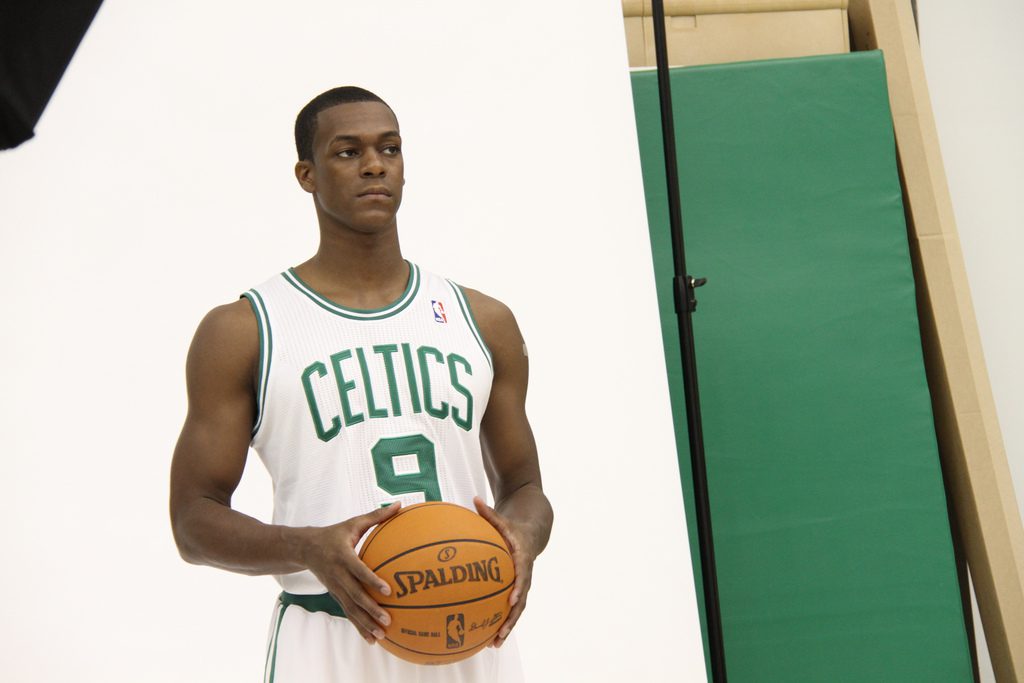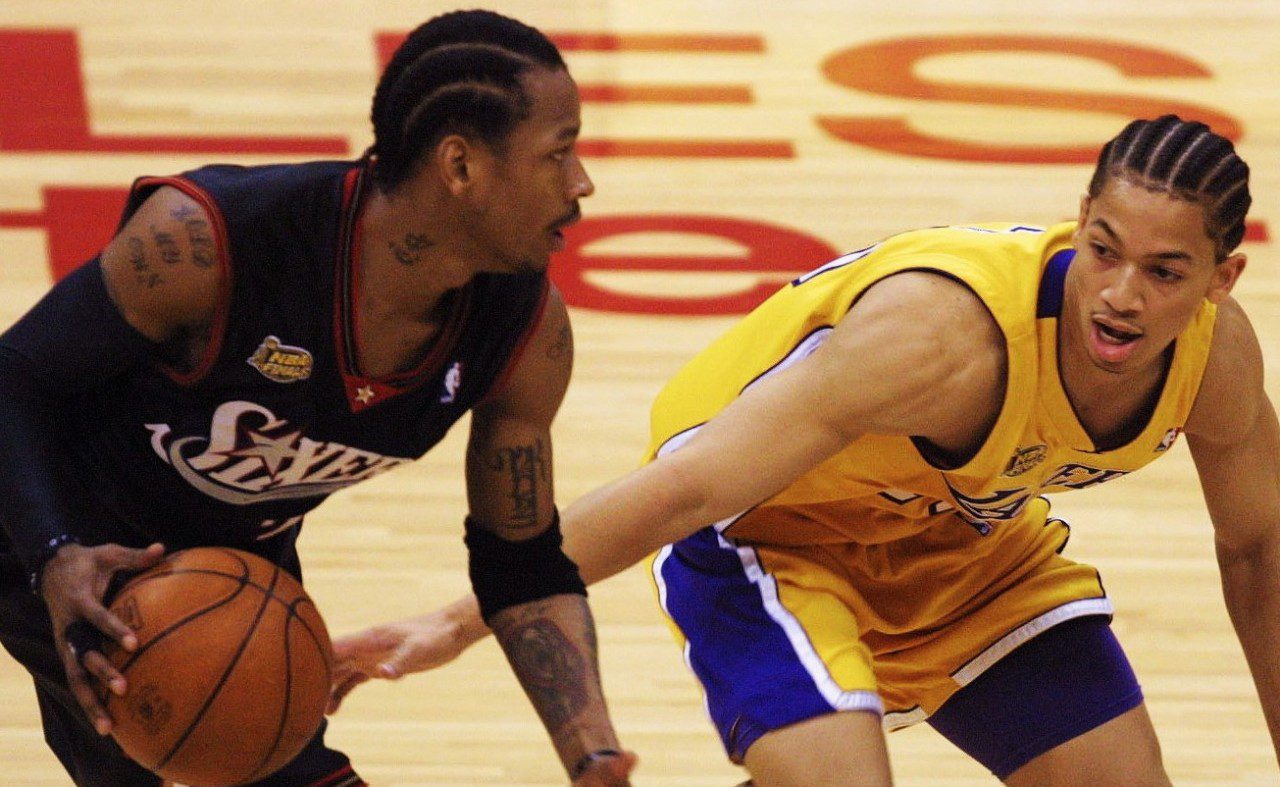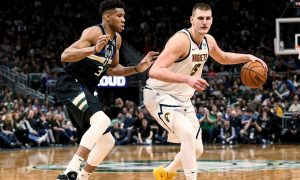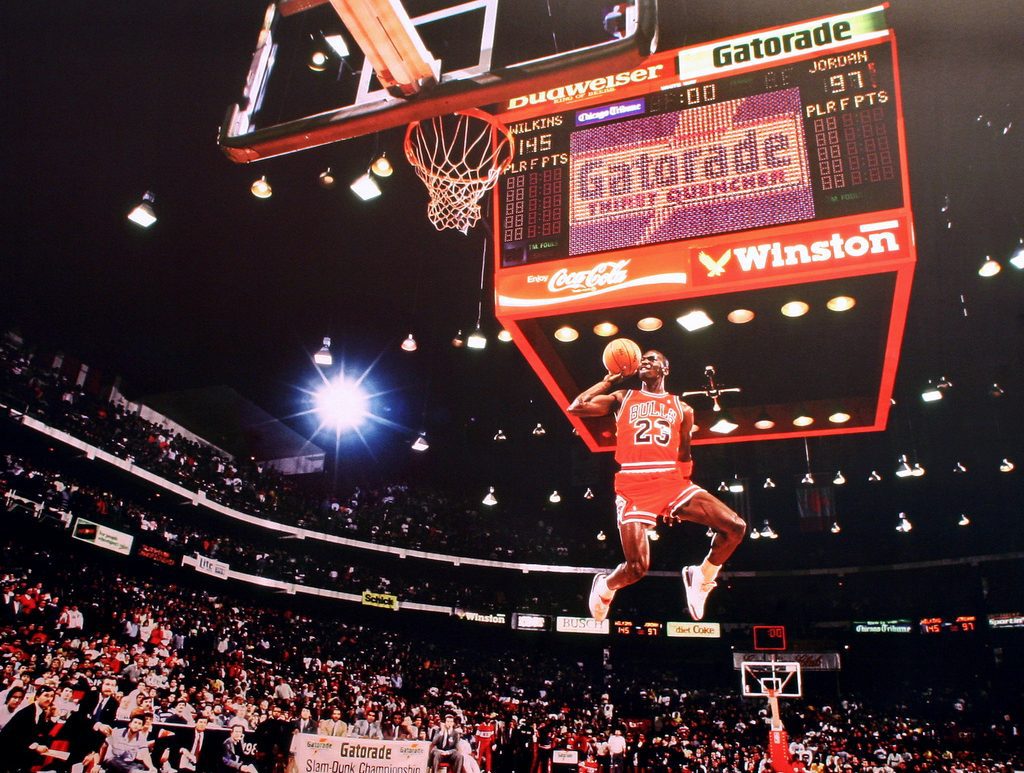
Image courtesy of DGA Productions/Flickr.
Danny Ainge is an irresponsible simpleton hyperactively undercutting the Boston Celtics’ tradition of winning and excellence.
Since Ainge assumed the reins as Executive Director of Basketball Operations in 2003, the Celtics lack coherent plans to be perennial championship contenders; the 2008-2011 period notwithstanding, the Celtics are a slipshod basketball team incapable of seriously contending for eight of Ainge’s twelve years. The Rajon Rondo giveaway (I refuse to call this a trade) highlights Ainge’s consistent inability to make roster moves that turn the Celtics into legitimate NBA title contenders. Here is a sampling of Ainge’s draft moves; consider this when Ainge touts his assets:
2003: Acquired Marcus Banks and Kendrick Perkins via trade
2004: Drafted Al Jefferson, Delonte West, Tony Allen, and Justin Reed
2005: Drafted Gerald Green, Ryan Gomes, and Orien Greene
2006: Acquired Rondo and Leon Powe via trade, also (intentionally) traded for Sebastian Telfair and Theo Ratliff the same night.
2007: Drafted Jeff Green, then traded him to Seattle for Ray Allen and Glen Davis (this is a rare Ainge trade that benefited the Celtics; the other being the Kevin Garnett trade)
2008: Drafted J.R. Giddens and Semih Erden
2009: Drafted Lester Hudson
2010: Drafted Avery Bradley and Luke Harangody
2011: Drafted E’twaun Moore
2012: Drafted Jared Sullinger, Fab Melo, and Kris Joseph
2013: Aquired Kelly Olynyk via trade
2014: Drafted Marcus Smart and James Young
Ainge’s draftees earned the following honors:
3rd Team All-NBA: Rondo (2011-2012), Jefferson (2013-2014 with Charlotte)
All-Defensive Team (1st and 2nd Teams): Tony Allen (3x with the Memphis Grizzlies), Rondo (4x), Bradley (2012-2013)
NBA All-Star Selections: Rondo (4x)
Ainge’s best draft maneuvers netted for the current Celtics (pre-giveaway) one NBA All-Star, one All-NBA player, and two All-Defensive selections. The idea that the Celtics are collecting assets is moronic, because the assets lack value due to Ainge’s track record of acquiring few marginal, let alone star, players in the draft. Rondo is the sole star player Ainge left the NBA Draft with – in order to see how feeble that haul is, compare the Celtics drafting to the San Antonio Spurs, Cleveland Cavaliers or Chicago Bulls’. Ainge loves to accumulate draft picks – similar to the way one saves money to buy a Dodge Challenger and drives off the lot in a 1982 Datsun after handing the salesman the entire pile of cash. The only difference between Ainge and the foolhardy car buyer is Ainge gets a pass and is considered “gutsy.”
Ainge defenders will point out the Executive of the Year Award for the 2007-08 season – the year when he gave up on his draft strategy and traded all of his “assets” for Kevin Garnett and Ray Allen. Of course, the Celtics won the title, and in 2010, the Cs were edged out by a trademark 6-for-24 Kobe Bryant performance in the NBA Finals. The Celtics competed for titles and this is the way Boston fans are accustomed to their basketball – competitive, edgy, and winning. The 2010-11 season best illustrates Ainge’s failings as a basketball impresario.
Of course, the enduring memory is LeBron James taking his talents to South Beach that season, but forgotten is the Celtics putting together a spirited Eastern Conference defense. The Celtics combatted the Miami Heat’s slick play with bruising, battering defense, and a snarl embodied in their center, Kendrick Perkins. It’s impossible to overstate Perk’s importance to the Celtics teams of that era. He was a defensive anchor in the paint allowing Garnett to roam the edges of the floor and direct traffic. Garnett was never more of a defensive force than during Perk’s time. Perk’s injury in Game 6 of the 2010 NBA Finals probably snuffed out the Celtics’ title hopes in retrospect – he was the perfect pick-and-roll partner for Rondo. That summer the Celtics invested in Shaquille O’Neal and the Big Shamrock’s time in Boston was marred by injury – his pesky Achilles put more pressure on Perk to return from the knee injury suffered in the previous NBA Finals appearance. Once Perk returned, the Celtics became the snarling schoolyard bullies hated by 29 other teams and beloved in New England. Then Ainge lusted after Jeff Green.
What’s the best way to destroy the spirit of a team? Trade someone considered one of the most important parts of the team. In February of 2011, at the trade deadline, Danny Daredevil traded Perkins – the Celtics immediately set to mourning the loss of their teammate and fans were apoplectic. The deal made no sense because Perk’s numbers were never his role – his role was to be the glowering enforcer at the end of the paint. His role was to be the guy that made LeBron think twice about driving to the hoop and embedding Dwyane Wade into the floor when Wade embarked upon his pinball-draw-a-cheap-foul drives. Ainge publicly stated Shaq would return to fill the role and fill it better than Perkins, as if Ainge was unaware that Shaq played most of his career in a defense-optional mentality. In Perk’s place was Jeff Green. Ainge’s idea was Green would extend the floor and allow the Celtics more flexibility – instead of beating Miami by having a strong inside presence and forcing LeBron, Wade, and Chris Bosh outside (the strategy successfully employed by Dallas and San Antonio), the Celtics would try and run with the Heat – a team half a decade younger. That was the day the Boston Celtics stopped competing for NBA titles.
There were two more “last rides” and, finally, Doc Rivers had enough and became empresario of the Los Angeles Clippers. Ainge cashed in Paul Pierce and Kevin Garnett for the Brooklyn Nets’ draft picks. No matter how much during 2011-2013 Ainge would talk about competing, the Celtics were a 6-8 seed that would bounce in the first round. The team lacked identity and its stars were aging, giving way to the greatest of Celtic traditions – the new guy taking up the mantle of “next great Celtic.”
And now he’s gone. Rondo’s limitations are well-known – the man lacks a jumper and can’t shoot free throws. Yet he’s incredible at setting up teammates and truly makes every player around him better. Rondo was the force keeping Pierce and Garnett competitive for two years longer than they should have been. Rondo’s defensive tenacity famously crippled LeBron, and he practically invented sidling up to the other team’s huddle. Rondo enhanced his skills, learning from the great players surrounding him and though he was regarded as the weakness of the 2008 NBA champions, his spirit fueled all the later teams. Rajon Rondo is a star, a player who doesn’t score in buckets and yet is second on the active player list in triple-doubles. He rebounds, generally enjoying the dirty work of basketball, and has a burning desire to win. The last part is most important. Rondo’s hatred of losing meant the Celtics would never seriously tank and that Brad Stevens’ men always had a mandate to compete on every possession. A team lead by Jeff Green lacks that same tenacity, and Stevens’ job is that much more mundane and depressing, which describes eight of Ainge’s twelve years in Boston to a tee.
Ainge is addicted to the roulette wheel of trading players and entertaining nonsensical proposals. General managers and heads of organizations around the league must call Ainge for entertainment – “Danny, it’s Pat Riley. What do you think of Jared Sullinger, Marcus Smart, Brandon Bass, and a second round pick for James Ennis and Justin Hamilton? Okay, you twisted my arm, I’ll throw in a conditional first rounder! I’m SO jealous of all your assets!” Ainge created an environment where players don’t feel secure and must know their days on a parquet floor have an expiration date. Rondo, a four-time All-Star, wanted to stay in Boston and be the leader of the next great Celtics dynasty. Ainge thinks the Philadelphia 76ers are a model of player development. Unfortunately, the guy who understands what being a Celtic means is now the starting point guard with the Dallas Mavericks.
Now is the time for Celtics fans to quit believing Ainge’s nonsense. There is no plan. The plan is to tank and rebuild around Jeff Green and Avery Bradley – two players who are nice bench options for a contender. Green possesses nothing to indicate he has a modicum of ability necessary to be the focal point of any team’s offense, and Bradley is horrifically overpaid at four years and $32 million. If Ainge is truly committed to hoarding “assets,” then Green and Bradley must go, blow the whole damn thing up, and build around Marcus Smart. He’s a tough guard, fierce lockdown defender that isn’t much of a scorer, but is tenacious. Sound familiar?
In the meantime, Wyc Grousbeck and the Boston Celtics ownership need to look at Ainge’s failure of a tenure and fire Danny. Ainge was an ancillary player in Boston – all he did was wave towels when Larry Bird did Larry Bird things. He’s a horrific gambler that Vegas casinos salivate over. All he does is lose on trades, lose on the draft, and reduce the greatest franchise in NBA history to a punchline along the lines of the Minnesota Timberwolves. Who ever thought we’d live in an era when it’s better to be a Clipper than a Celtic.
Thank you, Danny – the Celtics withstood the deaths of Len Bias and Reggie Lewis only to have you plunge the knife right through the heart of a winning tradition.
But, at least, the Celtics have assets.
















